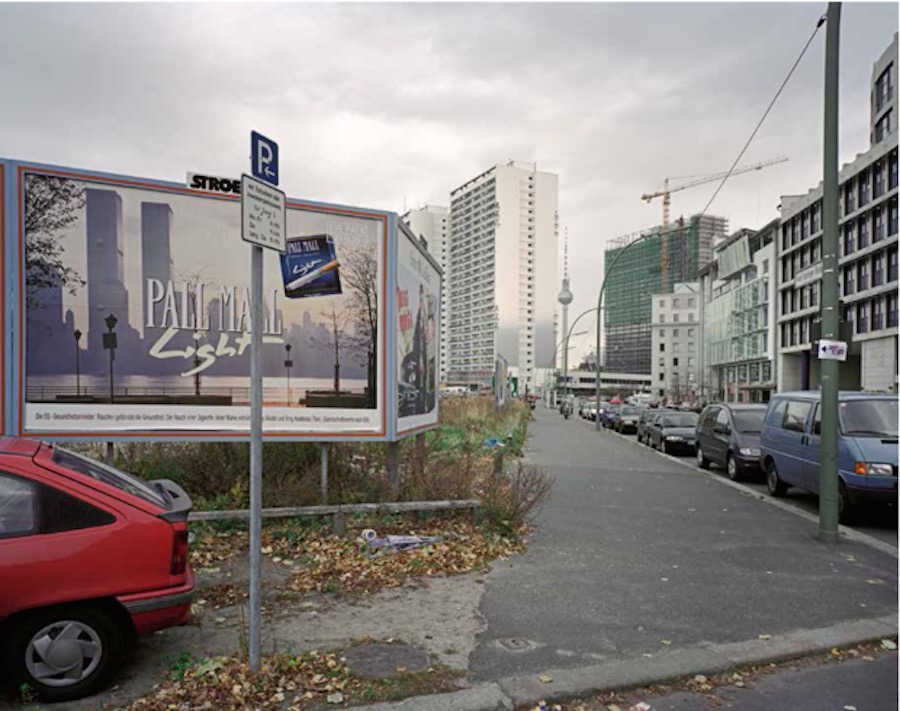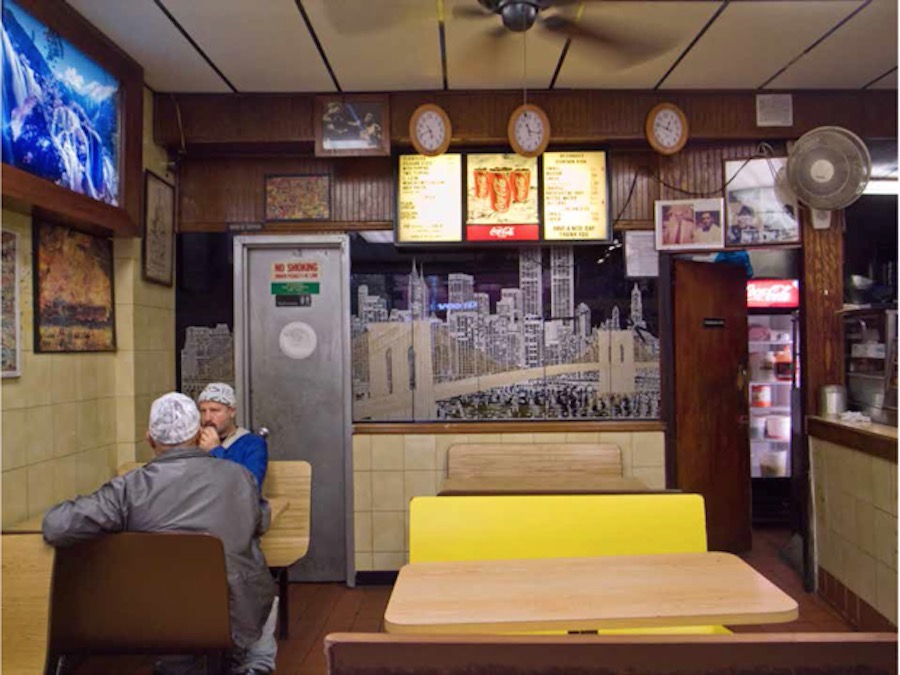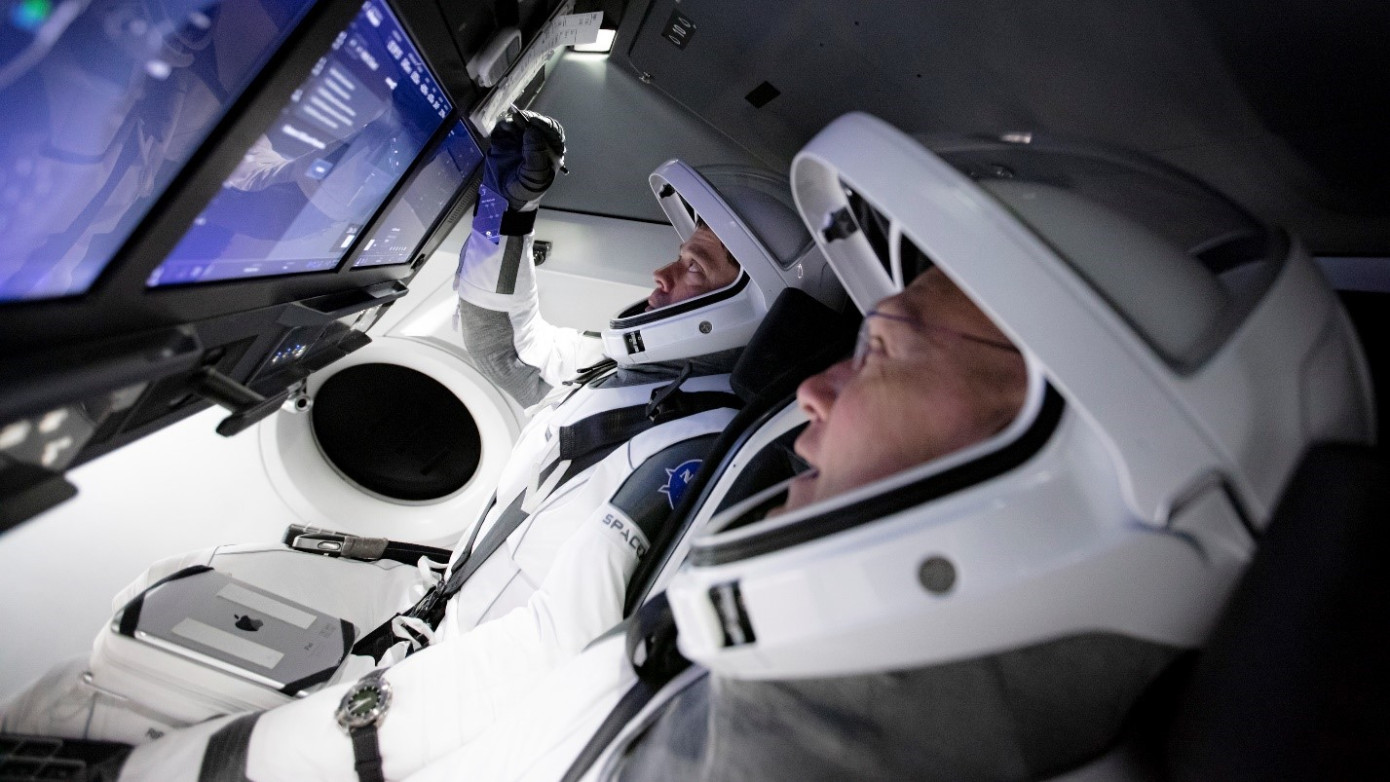In WTC, Brian Rose’s photographs explore presence, absence, and a constantly changing city.

The World Trade Center’s towers always seemed to find a way into Brian Rose’s photographs of Lower Manhattan.
In WTC, Rose’s book project, the photographer takes a look back at nearly 40 years of his own images in which the ubiquitous Twin Towers—and the buildings that have replaced them—appear.
Rose moved to New York in the late ‘70s to study photography at Cooper Union. By then, the Twin Towers were already standing and mostly unloved. Ada Louise Huxtable called them “ordinary and inconsequential,” in The New York Times. Paul Goldberger said in The City Observed that they were “pretentious and arrogant.” Rose, meanwhile, would roam the city—mostly south of 14th street—with his camera, capturing whatever looked interesting at the time, including boarded-up Lower East Side tenements and the abandoned West Side Highway. The towers often found their way into the frame.
After a Wall Street photo survey in the 1980s, Rose’s interests shifted to Europe. Living in Amsterdam at the time of the terrorist attacks of September 11, 2001, Rose flew back to New York to document Ground Zero and soon moved back to the city.
From our partners:
Since then, he’s captured the radical changes happening in Lower Manhattan as the wreckage of one of the most catastrophic events since World War II has been cleared to make way for a new, 24/7 neighborhood.
But, as with Rose’s book about the changing landscape of the Meatpacking District, most who page through WTC will contemplate Manhattan’s relentless transformation since a turbulent and mythologized 1970s. Change has come through economic shifts, public policy decisions, and tragedy. Rose’s work provides a clear, visual understanding of what the city has lost and gained through it all. CityLab caught up with him recently to discuss WTC.

What did you think of the Twin Towers when you first moved to New York, and how has your view of them changed since 9/11?
The Twin Towers were not well-loved by me or anyone I knew back in the ‘70s. Over time, however, they became an accepted part of the city—visual signposts that could be seen from almost anywhere. I remember the first terrorist attack on the World Trade Center in 1993. I was outside in Manhattan when I heard about it. I glanced downtown throughout the day, but the Twin Towers looked as blandly unperturbed as ever.
After 9/11, their absence was excruciatingly painful. There was the loss of life, of course, but it also felt like a limb had been wrenched violently from the corpus of the city. It was hard to look at the empty space in the sky where the towers used to stand. I still see them in my mind and my guess is that many New Yorkers who were around before 2001 do, too.
As a photographer, what about them struck you the most?
Lower Manhattan was my turf when I first photographed the city as a student. You couldn’t escape the Twin Towers.

This was the era of punk rock, artists’ lofts, and crumbling tenements, and much of the area was desolate on the weekend. I’d walk downtown sometimes with my camera on the abandoned West Side Highway adjacent to the Twin Towers. Once I walked up on the FDR Drive next to the Fulton Fish Market and photographed the Twin Towers poking up above the pitched roofs of the early 19th-century buildings. It would be unimaginable doing that today with all the traffic, and the police would be there in no time. It’s a different city now.
As rebuilding went on, how did photographing the changes compare to documenting Berlin after the wall came down?
There was an uncanny similarity in the rebuilding of Ground Zero and the rebuilding of Potsdamer Platz. The fall of the wall—which signaled the end of Soviet power—and the terrorist attack on the Twin Towers were two of the pivotal historical moments in the past 50 years. Each spurred massive reconstruction campaigns meant to repair damage to the urban fabric and carried great symbolic import with conflicting meanings to different people.

Both construction sites also drew huge crowds of tourists. In Berlin, they actually built a raised pavilion to exhibit the plans and offer a panoramic overlook of the site. In New York, the tourists had to pick their way through the construction chaos in search of a good view. The best spot was probably the window of the former Winter Garden across West Street.
All of this went through my head as I photographed the rebuilding of the World Trade Center—the symmetry of it and the fact that I was witness to these two earthshaking events.
I don’t believe that photographs have the capacity to offer commentary in any literal sense. They remain mute, but I do believe they can become containers for meaning and function as carriers of collective memory. I took my job very seriously in that regard in both Berlin and New York.
Explain the story behind your photo of the Pall Mall ad in Berlin with the Twin Towers. What did it mean to you then and what does it mean to you looking at it today?
The Pall Mall ad photo was taken in 1996, seven years after the wall came down, a part of my continuing documentation of the former border zone. I certainly had no inkling of what would happen six years later to the World Trade Center. But seeing the Twin Towers juxtaposed with Berlin’s TV Tower immediately struck me as something to photograph. Both were iconic symbols of the two cities—New York’s being an expression of economic power and western triumphalism, Berlin’s being a vestige of communist propaganda, an expression of modern technology emerging from the ruins of the postwar landscape.

Looking at the photograph now, it seems like a poignant reminder that nothing is permanent no matter how indestructible it seems—structures or governments.
What about the behaviors of people walking around the Financial District? How had that changed?
Before 9/11, the Financial District emptied out on workdays and stayed empty on weekends. Now, Lower Manhattan is filled with families living in Battery Park City and Tribeca, sometimes inside former office buildings that have been converted into apartments.
Wall Street investment bankers are now just as likely to be pushing strollers in the street as they are dashing for Grand Central or Penn Station. And many downtowners today work in creative and tech fields. People are going about their day-to-day business, except for the tourists who remain fixated on 9/11 and the memorial. The other day, a middle school choir from North Carolina began singing the National Anthem on the WTC plaza. A security guard ordered them to stop. I don’t know which is crazier—the idea of spontaneously launching into the anthem or the fact that a security guard felt compelled to intervene. I can’t tell you how many times I was told to stop taking pictures by private security guards.
What were some of the more surprising unofficial artistic memorials to the Twin Towers you came across? One that really stuck with you?
There are a lot of murals around the city that include the Twin Towers or some kind of reference to 9/11. Sometimes, businesses will have a photograph or a poster on a wall. Many of the murals are fading, and I know of several that are now gone. My favorite one I recently discovered is a ghostly image of the Twin Towers on a wall in Queens underneath the Long Island Expressway. As time goes on, I think most of the unofficial memorials will disappear.

How does One WTC as a figure in the background affect your photos of Lower Manhattan differently than the Twin Towers did?
I never particularly liked the World Trade Center, especially at ground level, where the scale of the complex was overwhelming. But I did come to appreciate the Towers on the skyline. They were like minimalist art of the period—they were perfect backdrop buildings for the architectural drama of Lower Manhattan.
One World Trade Center is just as tall, but somehow less consequential. Because the footprints of the Twin Towers were preserved for the memorial, One World Trade stands a little to the northwest and rarely seems to line up as well visually with the street grid of Lower Manhattan.
What has the experience of going through these photos been like?
Going through my archives all the way back to 1977 was an enormous undertaking. The photographs were made in different formats: 35mm slides, 4×5 negatives, and digital snapshots. I spent countless hours on Photoshop getting it all to be visually coherent. It was also a deeply emotional experience and a reassessment of my entire career going back to being a student wandering Lower Manhattan with my Nikkormat SLR discovering color photography at a time when relatively few were doing it. And at the heart of all this work was the tragedy of 9/11, which I was not present to photograph. I have no idea whether I would have tried to, anyway.
WTC is ultimately about presence and absence, which I’ve come to understand as the central concern of all my work as a photographer. It is not so much about individual images as about connecting dots, following threads, and considering the arc of history both on personal terms and as shared experience.
This feature originally appeared in Citylab.













